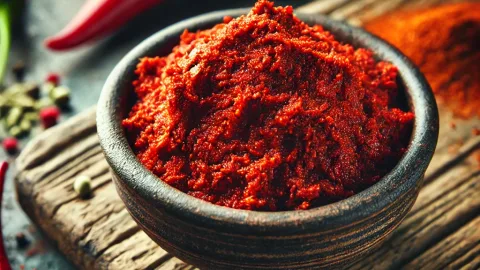White pepper comes from the same plant as black pepper, but the berries are harvested later and stripped of their outer skin, leaving only the white core.
White pepper is mainly grown in tropical regions such as India, Indonesia, Malaysia and Vietnam.
The ripe berries of the pepper plant are harvested and then soaked in water to remove the outer skin. The inner seeds are dried to form white peppercorns.
In addition to white pepper, there are black pepper, green pepper and pink pepper, each with its own unique production method and flavor profile.
Kcal per 100g: 296 kcal
Important nutrients: Vitamin C, Vitamin K, iron, fiber.
White pepper has a milder, earthy flavor compared to black pepper, with a subtle warmth and less complexity.
White pepper is often used in light sauces, soups, mashed potatoes and dishes where a mild pepper flavor is desired without the black specks of black pepper.
Store white pepper in an airtight container in a cool, dark place to preserve its flavor and freshness.
White pepper contains antioxidants and has anti-inflammatory properties. It can also promote digestion and improve circulation.
White pepper can be used whole or ground, depending on the needs of the dish. For best taste, it is recommended to grind whole grains fresh just before use.



